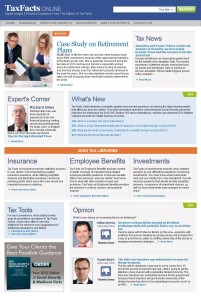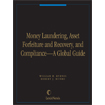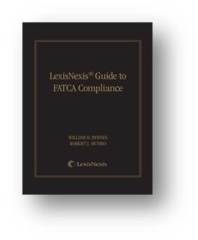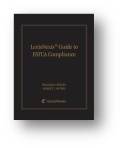I came across two pertinent blog posts that I share below, wherein Treasury justifies its policy based upon the potential for capital flight, followed by the Treasury opposite stance to the Court just months before in Florida Bankers Assn v Treasury. Below I post some of my lecture comments from 2010 regarding FATCA and capital flight.
Treasury Argues Capital Flight Requires FATCA IGAs With Other Countries
Treasury's stated authority is: "Your letter also asks about statutory authority to enter into and implement the IGAs. The United States relies, among other things, on the following authorities to enter into and implement the IGAs: 22 USC Section 2656; Internal Revenue Code Sections 1471, 1474(f), 6011, and 6103(k)(4) and Subtitle F, Chapter 61, Subchapter A, Part III, Subpart B (Information Concerning Transactions with Other Persons)."
Professor Townsend (Houston) includes in the comments to the letter a rebuttal by Professor Allison Christians (McGill) "None of these sources of law contain any authorization to enter into or implement the IGAs. It is patently clear that no such authorization has been made by Congress, and that the IGAs are sole executive agreements entered into by the executive branch on its own under its "plenary executive authority”. As such the agreements are constitutionally suspect because they do not accord with the delineated treaty power set forth in
Article II." See Professor Christians full response at
http://taxpol.blogspot.com.au/2014/07/irs-claims-statutory-authority-for.html
The above highlight is interesting. However, I point out another aspect of the Treasury justification for IGAs.
Treasury states that: "Suspending further negotiation of IGAs would negatively affect the United States' ability to enforce the provisions of FATCA without the imposition of substantial withholding tax. ... This could result in harm to the interests of the United States because it could prompt divestment from U.S. investments by affected financial institutions." (emphasis added)
Treasury Argues Capital Flight Is Not a FATCA Concern
But Treasury argued quite the opposite in its recent, successful defense against the Florida and Texas Bankers Associations in Florida Bankers Assn v Treasury.
Quoting the Court:
"The IRS admits that it does not know exactly how much money non-resident aliens have deposited in U.S. banks. ...
Instead of using exact data, the IRS estimated, based on a mountain of existing information from the Treasury Department, that non-resident alien deposits in U.S. banks amounted to no more than $400 billion. ...
... The IRS was unconcerned because it had determined that very little of this mo.ney would be affected – namely, because these regulations would not deter any rational actor other than a tax fraud from using U.S. banks.
4. Capital Flight
At the heart of the Bankers Associations’ argument – albeit buried somewhat in their brief – is the contention that the regulations should not have been issued given the negative impact they may have on banks. Plaintiffs claim that the IRS “disregarded” a flood of comments arguing that the new regulations would cause non-residents to withdraw their deposits en masse and thereby trigger substantial and harmful capital flight. The IRS, however, did not ignore those comments; indeed, it dedicated a majority of the preamble to addressing concerns about capital flight.
... As a result of those protections, the Government concluded that the “regulations should not significantly impact the investment and savings decisions of the vast majority of non-residents.”
Plaintiffs raise one additional, related issue: They claim that the IRS ignored the massive capital flight that took place after the Canadian reporting requirements became effective in January 2000. The IRS, by contrast, contends that the alleged Canadian capital flight is a fiction: While the amount of Canadian interest-bearing deposits may have dipped after the reporting requirements were issued, they climbed back up shortly after that."
My comments on tax elasticity of deposits
Tax Elasticity Of Deposits
In the 2002 article International Tax Co-operation and Capital Mobility, prepared for an ECLAC report, from analysing data from the Bank for International Settlements (“BIS”) on international bank deposits, Valpy Fitzgerald found “that non-bank depositors are very sensitive to domestic wealth taxes and interest reporting, as well as to interest rates, which implies that tax evasion is a determinant of such deposits….”
[1] Non-bank depositors are persons that instead invest in alternative international portfolios and financial instruments.
Estimating How Much Latin American Tax Evasion are US Banks Involved With?
Some Miami based commentators, like the renown author Professor Marshall Langer, estimated that at least $300B of capital outflow will occur from the USA pursuant to its exchange of tax information with Brazil and other Latin American countries, like Argentina and Venezuela. Based on their discussions with South Florida real estate firms, information exchange will lead to a withdrawal of Latin American interest in its real estate market. (Note that since 2010, we now know that US information collection will not look through company entities as is required by FATCA from FFIs, and because most real estate for estate tax purposes is held via corporate structures, it will not capture information on most real estate investment.)
Three historical benchmarks regarding the imposition of withholding tax on interest illustrate the immediate and substantial correlation that an increase in tax on interest has on capital flight. The benchmarks are (1) the 1964 US imposition of withholding tax on interest that immediately led to the creation of the London Euro-dollar market;
[2] (2) the 1984 US exemption of withholding tax on portfolio interest that immediately led to the capital flight from Latin America of US$300 billion to US banks;
[3] and (3) the 1989 German imposition of withholding tax that led to immediate capital flight to Luxembourg and other jurisdictions with banking secrecy
[4]. The effect was so substantial that the tax was repealed only four months after imposition.
The Establishment of London as an International Financial Center
The 1999 IMF Report on Offshore Banking concluded that the US experienced immediate and significant capital outflows in 1964 and 1965 resulting from the imposition of a withholding tax on interest. Literature identifies the establishment of London as a global financial centre as a result of the capital flight from the US because of its imposition of Interest Equalisation Tax (IET) of 1964.
[5] The take off of the embryonic London eurodollar market resulted from the imposition of the IET.
[6] IET made it unattractive for foreign firms to issue bonds in the US. Syndicated bonds issued outside the US rose from US$135 million in 1963 to US$696 million in 1964.
[7] In 1964-65, the imposition of withholding tax in Germany, France, and The Netherlands, created the euromark, eurofranc and euroguilder markets respectively.
[8]
The Establishment of Miami as an International Financial Center
Conversely, when in 1984 the US enacted an exemption for portfolio interest from withholding tax, Latin America experienced a capital flight of $300 billion to the US.
[9] A substantial portion of these funds were derived from Brazil. In fact, some pundits have suggested that Miami as a financial center resulted not from the billions generated from the laundering of drug proceeds which had a tendency to flow outward, but from the hundreds of billions generated from Latin inward capital, nearly all unreported to the governments of origination.
The Establishment of Luxembourg as an International Financial Center
In January of 1989, West Germany imposed a 10% withholding tax on savings and investments. In April it was repealed, effective July 1st, because the immediate cost to German Banks had already reached DM1.1 billion.
[10] The capital flight was so substantial that it caused a decrease in the value of the Deutsche mark, thereby increasing inflation and forcing up interest rates. According to the Financial Times, uncertainty about application of the tax, coupled with the stock crash in 1987, had caused a number of foreign investment houses to slow down or postpone their investment plans in Germany. A substantial amount of capital went to Luxembourg, as well as Switzerland and Lichtenstein.
Switzerland’s Fisc May Come Out Ahead
Perhaps ironically given the nature of the UBS situation currently unfolding, a Trade Based Money Laundering study by three prominent economists and AML experts focused also on measuring tax evasion uncovered that overvalued Swiss imports and undervalued Swiss exports resulted in capital outflows from Switzerland to the United States in the amount of $31 billion within a five year time span of 1995-2000.
[11] That is, pursuant to this transfer pricing study, the Swiss federal and cantonal revenue authorities are a substantial loser to capital flight to the USA. The comparable impact of the lost tax revenue to the much smaller nation of Switzerland upon this transfer pricing tax avoidance (and perhaps trade-based money laundering) may be significantly greater than that of the USA from its lost revenue on UBS account holders. Certainly, both competent authorities will have plenty of work on their hands addressing the vast amount of information that needs to be exchanged to stop the bleeding from both countries’ fiscs.
[1] International Tax Cooperation and Capital Mobility, Valpy Fitzgerald, 77 CEPAL Review 67 (August 2002) p.72.
[2] See Charles Batchelor,
European Issues Go from Strength to Strength: It began with Autostrade’s International Bond in 1963, The Financial Times (September 25, 2003) p.33;
An E.U. Withholding Tax?
[3] Globalisation, Tax Competition, and the Fiscal Crisis of the Welfare State, Reuven Avi-Yonah, 113 HVLR 1573, 1631 (May 2000).
[4] Abolition of Withholding Tax Agreed in Bonn Five-Month-Old Interest Withholding To Be Repealed, 89 TNI 19-17.
[5] See Charles Batchelor,
European Issues Go from Strength to Strength: It began with Autostrade’s International Bond in 1963, The Financial Times (September 25, 2003) p.33;
An E.U. Withholding Tax?
[6] 1999 IMF Offshore Banking Report p.16.
[7] 1999 IMF Offshore Banking Report p.16-17.
[8] 1999 IMF Offshore Banking Report p.17.
[9] Globalisation, Tax Competition, and the Fiscal Crisis of the Welfare State, Reuven Avi-Yonah, 113 HVLR 1573, 1631 (May 2000).
[10] Abolition of Withholding Tax Agreed in Bonn Five-Month-Old Interest Withholding To Be Repealed, 89 TNI 19-17.
[11] Maria E. de Boyrie, Simon J. Pak and John S. Zdanowicz
The Impact Of Switzerland’s Money Laundering Law On Capital Flows Through Abnormal Pricing In International Trade Applied 15 Financial Economics 217–230 (Rutledge 2005).
Over 600 pages of in-depth analysis of the practical compliance aspects of financial service business providing for exchange of information of information about foreign residents with their national competent authority or with the IRS (FATCA), see
Lexis Guide to FATCA Compliance, 2nd Edition just published!





